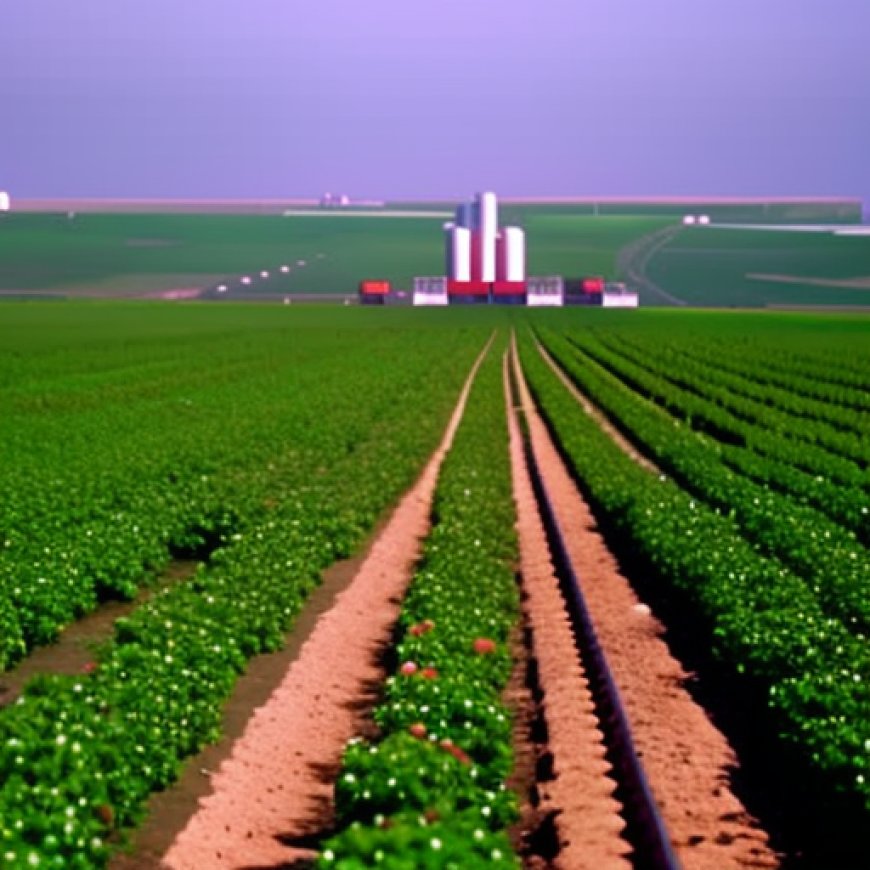The export of agricultural products via the Black Sea corridor has reached pre-war levels.
The export of agricultural products via the Black Sea corridor has reached pre-war levels. Ukraine Business News


Ukraine’s Temporary Sea Route Facilitates Record-breaking Grain Exports

After the Russian Federation withdrew from the Black Sea Grain Initiative last summer, Ukraine and its international partners have successfully established a temporary sea route for grain exports. This initiative has resulted in the transportation of 25 million tons of farm products through the newly created route, surpassing the total volume of exports during the entire year of the Black Sea Grain Initiative’s operation. The significant increase in exports has allowed Ukraine to reach pre-war volumes and is actively working towards further increasing throughput.
Impact on Sustainable Development Goals (SDGs)
The establishment of the temporary sea route for grain exports aligns with several Sustainable Development Goals (SDGs) set by the United Nations. These goals include:
- SDG 2: Zero Hunger – The increased volume of grain exports contributes to global food security, as approximately 400 million people depend on Ukrainian food exports. By ensuring a steady supply of food to countries in need, Ukraine is actively working towards achieving zero hunger.
- SDG 8: Decent Work and Economic Growth – The record-breaking grain exports have created economic opportunities and employment in Ukraine’s agricultural sector. This growth in the agricultural industry contributes to the overall economic development of the country.
- SDG 9: Industry, Innovation, and Infrastructure – The successful establishment of the temporary sea route demonstrates Ukraine’s innovative approach to overcoming challenges and developing efficient transportation infrastructure for grain exports.
- SDG 17: Partnerships for the Goals – Ukraine’s collaboration with international partners in creating the temporary sea route highlights the importance of global partnerships in achieving sustainable development.
Grain from Ukraine Humanitarian Initiative
In addition to the increased grain exports, Ukraine has also launched the Grain from Ukraine humanitarian initiative. This initiative aims to provide assistance to countries facing food shortages by sending grain shipments. So far, eight ships carrying more than 200,000 tons of grain have been sent to Somalia, Ethiopia, Kenya, Yemen, Nigeria, and Sudan. Through this initiative, Ukraine is actively contributing to the achievement of SDG 2 (Zero Hunger) by providing essential food supplies to those in need.
SDGs, Targets, and Indicators
| SDGs | Targets | Indicators |
|---|---|---|
| SDG 2: Zero Hunger | Target 2.3: By 2030, double the agricultural productivity and incomes of small-scale food producers, in particular women, indigenous peoples, family farmers, pastoralists, and fishers, including through secure and equal access to land, other productive resources and inputs, knowledge, financial services, markets, and opportunities for value addition and non-farm employment. | Indicator 2.3.1: Volume of production per labor unit by classes of farming/pastoral/forestry enterprise size |
| SDG 8: Decent Work and Economic Growth | Target 8.3: Promote development-oriented policies that support productive activities, decent job creation, entrepreneurship, creativity, and innovation, and encourage the formalization and growth of micro-, small- and medium-sized enterprises, including through access to financial services. | Indicator 8.3.1: Proportion of informal employment in non-agriculture employment, by sex |
| SDG 17: Partnerships for the Goals | Target 17.9: Enhance international support for implementing effective and targeted capacity-building in developing countries to support national plans to implement all the Sustainable Development Goals, including through North-South, South-South, and triangular cooperation. | Indicator 17.9.1: Dollar value of financial and technical assistance (including through North-South, South-South, and triangular cooperation) committed to developing countries |
Analysis
1. Which SDGs are addressed or connected to the issues highlighted in the article?
The SDGs addressed or connected to the issues highlighted in the article are:
– SDG 2: Zero Hunger
– SDG 8: Decent Work and Economic Growth
– SDG 17: Partnerships for the Goals
2. What specific targets under those SDGs can be identified based on the article’s content?
Based on the article’s content, the specific targets under the identified SDGs are:
– Target 2.3: By 2030, double the agricultural productivity and incomes of small-scale food producers.
– Target 8.3: Promote development-oriented policies that support decent job creation and entrepreneurship.
– Target 17.9: Enhance international support for implementing effective and targeted capacity-building in developing countries.
3. Are there any indicators mentioned or implied in the article that can be used to measure progress towards the identified targets?
Yes, there are indicators mentioned or implied in the article that can be used to measure progress towards the identified targets:
– Indicator 2.3.1: Volume of production per labor unit by classes of farming/pastoral/forestry enterprise size can measure progress towards Target 2.3.
– Indicator 8.3.1: Proportion of informal employment in non-agriculture employment, by sex can measure progress towards Target 8.3.
– Indicator 17.9.1: Dollar value of financial and technical assistance committed to developing countries can measure progress towards Target 17.9.
By analyzing the article, it is evident that Ukraine’s efforts in increasing agricultural productivity, promoting job creation, and engaging in international partnerships align with the targets and indicators of the identified SDGs.
SDGs, Targets, and Indicators
| SDGs | Targets | Indicators |
|---|---|---|
| SDG 2: Zero Hunger | Target 2.3: By 2030, double the agricultural productivity and incomes of small-scale food producers, in particular women, indigenous peoples, family farmers, pastoralists, and fishers, including through secure and equal access to land, other productive resources and inputs, knowledge, financial services, markets, and opportunities for value addition and non-farm employment. | Indicator 2.3.1: Volume of production per labor unit by classes of farming/pastoral/forestry enterprise size |
| SDG 8: Decent Work and Economic Growth | Target 8.3: Promote development-oriented policies that support productive activities, decent job creation, entrepreneurship, creativity, and innovation, and encourage the formalization and growth of micro-, small- and medium-sized enterprises, including through access to financial services. | Indicator 8.3.1: Proportion of informal employment in non-agriculture employment, by sex |
| SDG 17: Partnerships for the Goals | Target 17.9: Enhance international support for implementing effective and targeted capacity-building in developing countries to support national plans to implement all the Sustainable Development Goals, including through North-South, South-South, and triangular cooperation. | Indicator 17.9.1: Dollar value of financial and technical assistance (including through North-South, South-South, and triangular cooperation) committed to developing countries |
Copyright: Dive into this article, curated with care by SDG Investors Inc. Our advanced AI technology searches through vast amounts of data to spotlight how we are all moving forward with the Sustainable Development Goals. While we own the rights to this content, we invite you to share it to help spread knowledge and spark action on the SDGs.
Fuente: ubn.news

Join us, as fellow seekers of change, on a transformative journey at https://sdgtalks.ai/welcome, where you can become a member and actively contribute to shaping a brighter future.







